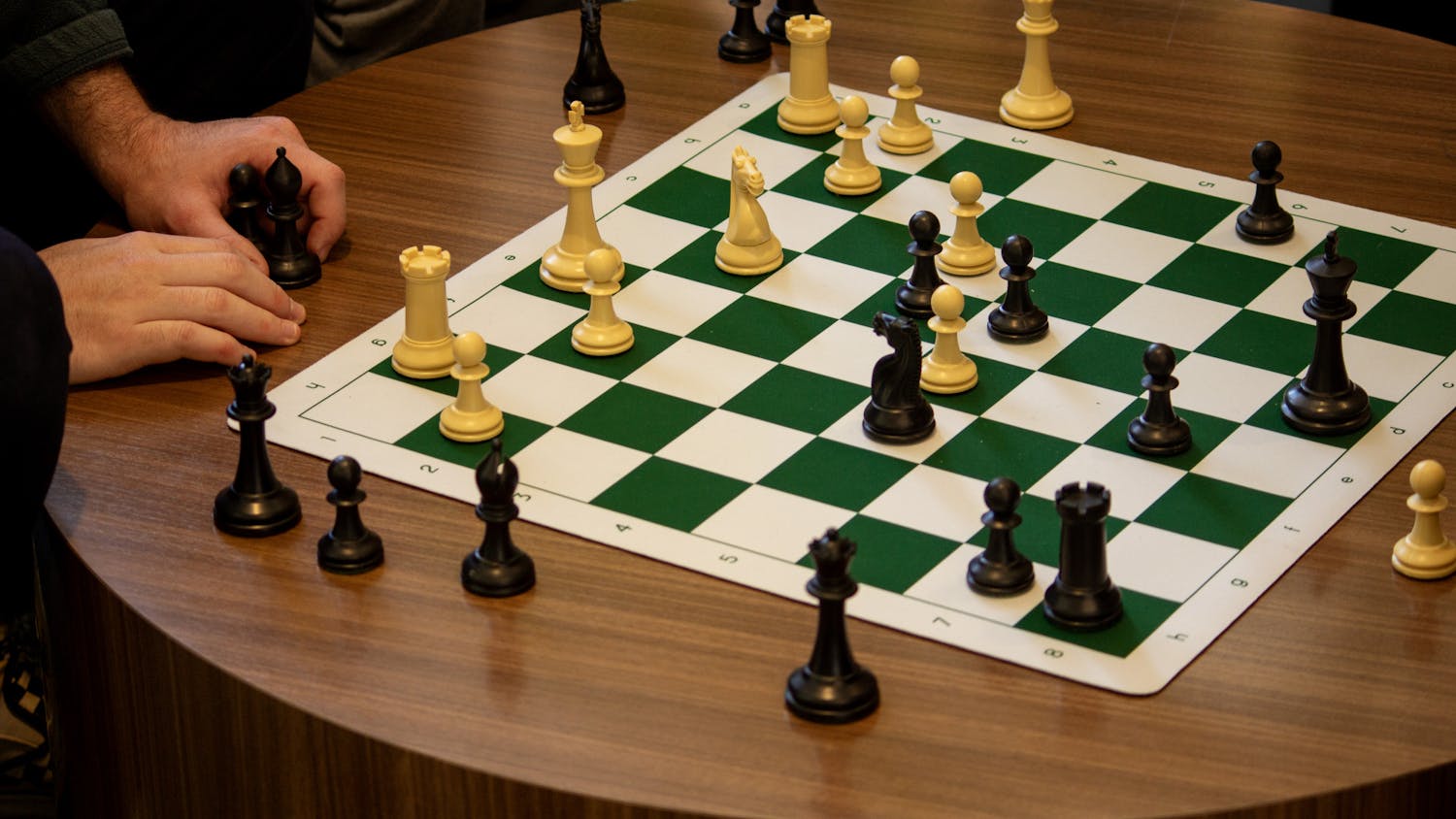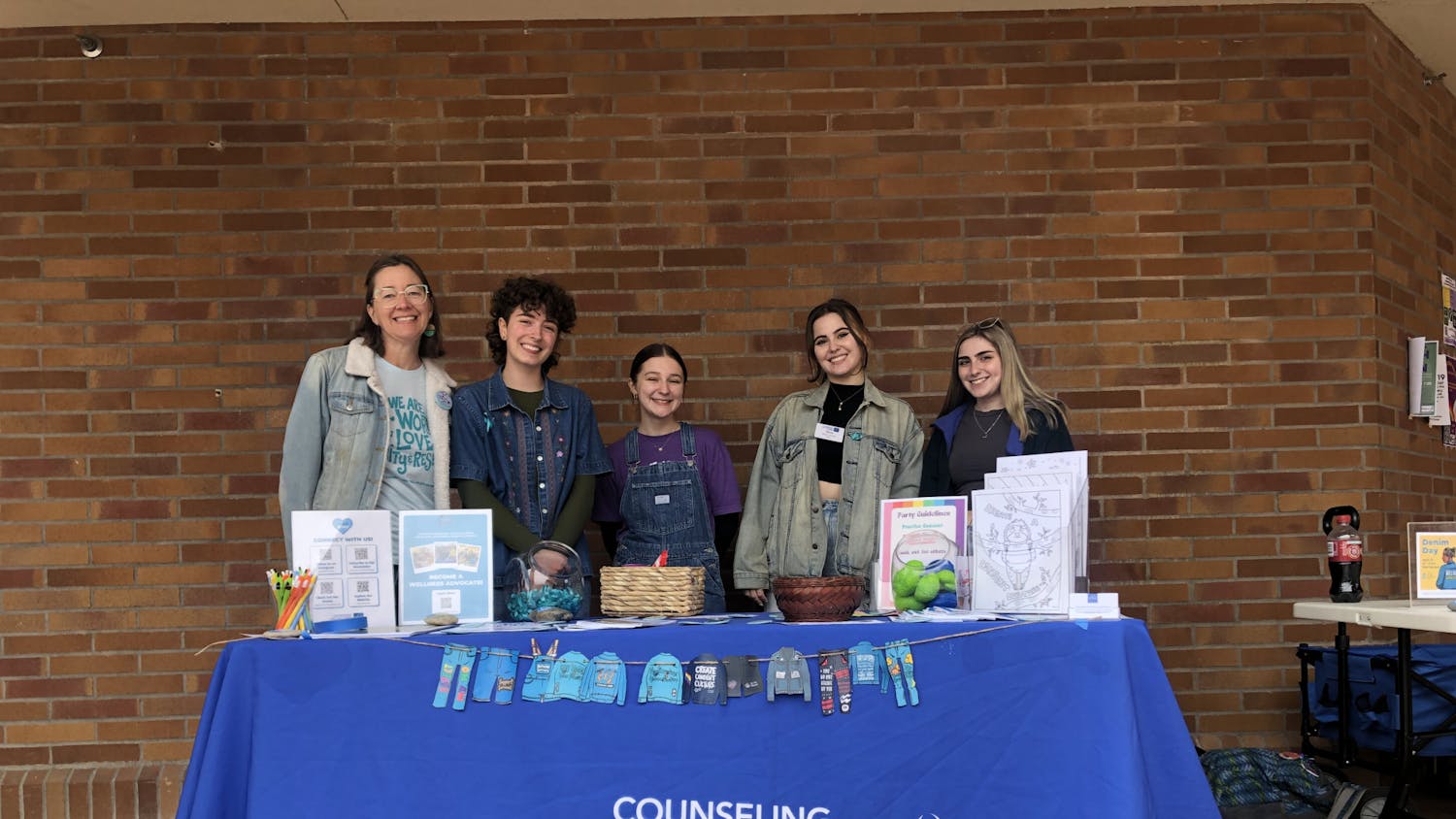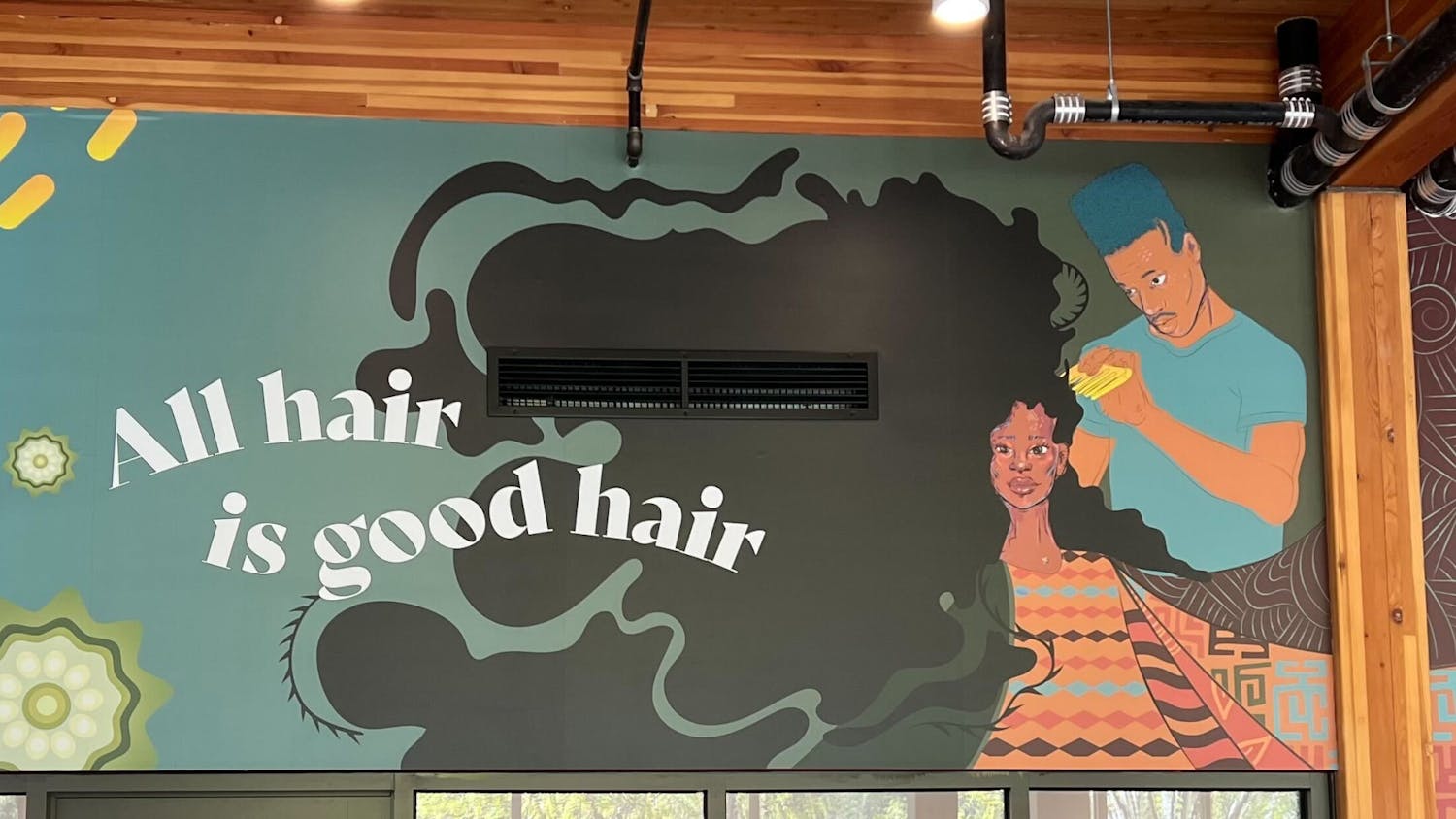Donald Judd's sculpture "Untitled 1982" in its new location on south campus on Wednesday, Oct. 30. // Photo by Ana Soltero By Ana Soltero Donald Judd’s sculpture, “Untitled 1982,” returned to campus on Oct. 29. This sculpture can be described as a box consisting of six cor-ten steel panels. It first sat near Old Main and Edens Hall, but was removed in December 2013 when the sculpture was deemed to be rusting and unsafe by former director of the Western Gallery, Sarah Clark-Langager. “The rusting in one of the panels … was probably rusted for an inch or two at the bottom,” Kit Spicer, the dean of the College of Fine and Performing Arts, said. While the green lawn near Edens was selected as the resting spot for “Untitled 1982” by Donald Judd himself, what no one thought about is how Western sits on a bog. “There was a pond there and it had been filled, but still the water [level] is very high, which meant that the sculpture never dried,” Hafthor Yngvason, director of the Western Gallery, said. When cor-ten steel rusts, it creates its own protective surface. Under the right conditions, the rusting stops. “[What] they did not know when they placed the sculpture is that if cor-ten steel does not dry, it just keeps rusting, so that location was terrible,” Yngvason said. “It was always like it was raining inside of it because of all the humidity or the water constantly around it.” Approximately six years and $195,000 later, “Untitled 1982” sits near the Flag Plaza and Academic West. Yngvason said the location was chosen because the green lawn area is similar to its original location. Yngvason and the Judd Foundation worked with the geology department to pick the right location, he said. “They provided me the testing showing what’s under here,” Yngvason said. “There is no problem with water, it just runs off. There is more wind here so that helps to dry the sculpture.” Only half of the six original cor-ten steel plates were kept. The rest were refabricated. At first, only five of the six panels were thought to be salvageable. “There is the question whether, if Donald Judd [was] alive, whether he would have said, ‘That’s fine.’ He had to have the steel fabricated. He did not make it,” Yngvason said. During the restoration process, Yngvason said they talked to Flavin Judd, Donald Judd’s son. Flavin Judd felt uncomfortable about rebuilding the sculpture, Yngvason said. Two conservators from Fabrication Specialties, a restoration company in Seattle, looked at the sculpture and concluded that the outside panels could be saved, but the inside panels were gone. “I can’t tell by looking at them,” Spicer said. Fourth-year political economy student Evan Shuster said he believes the sculpture, “increases the general beauty of Western’s campus.” However, not everyone has the same appreciation for the art. “If I wanted to observe things [that are] random and beautiful, possess[es] intricacy, strength and grandiosity, I would look no further than the forest,” said Spencer Mills, a fourth-year accounting and management student. Spicer, on the other hand, said he enjoys seeing the sculptures as he walks through campus. “I think these are such a present part of daily life,” Spicer said. “You almost forget they are here and what the magnitude of them is.”





